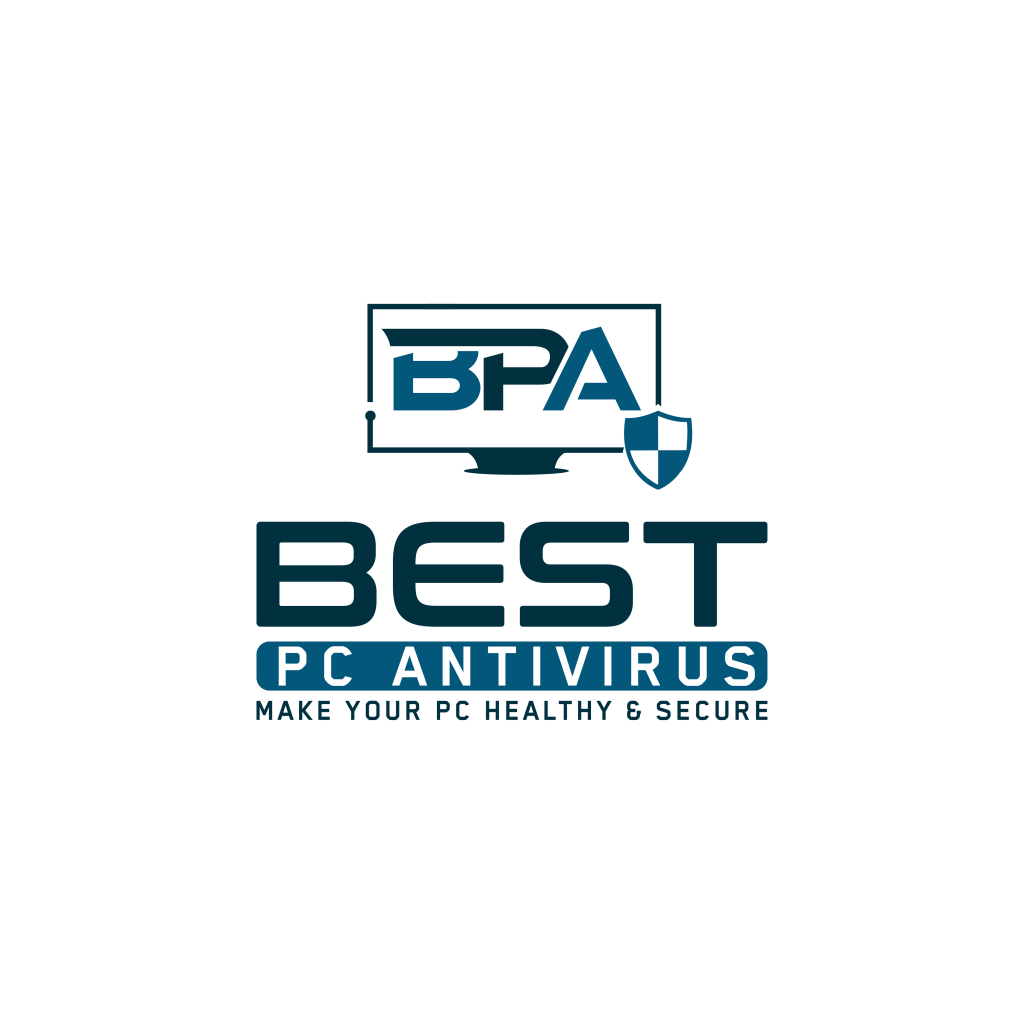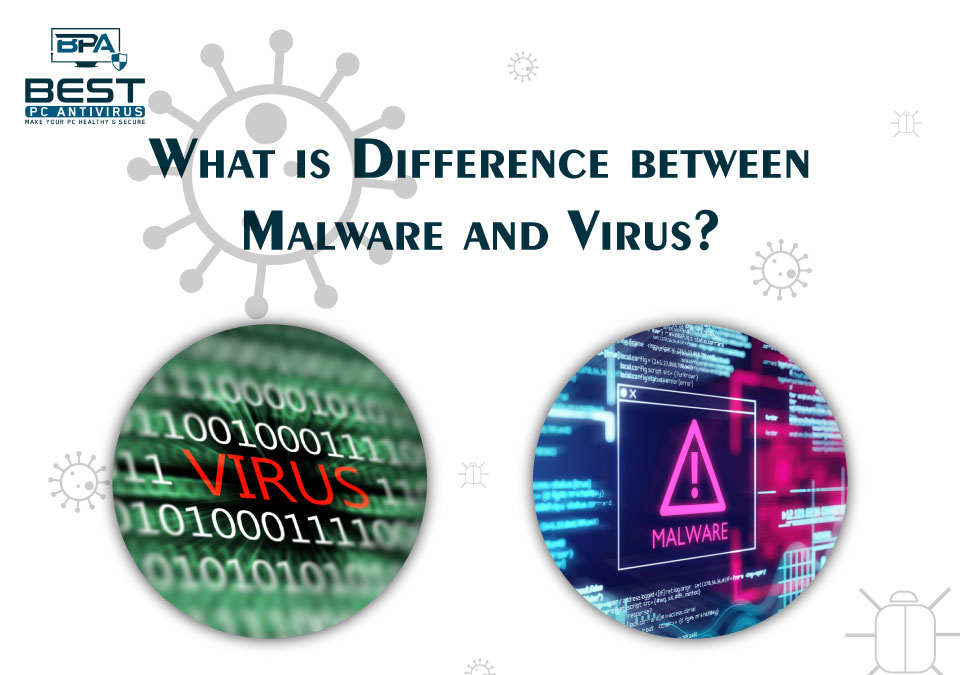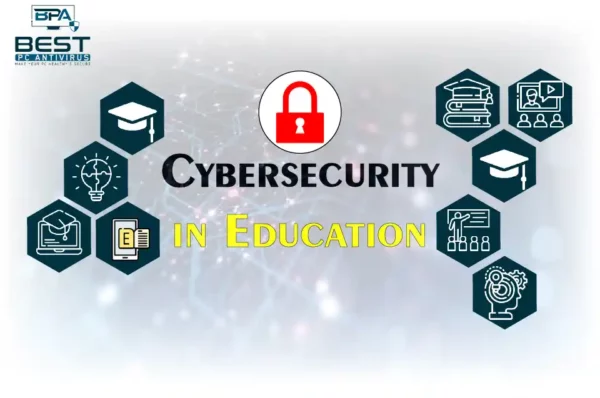Many people use the terms “malware” and “virus” interchangeably, but they are not the same thing. The distinction between malware and virus is that malware is an umbrella term, whereas virus is just one type of malware among many others. Continue reading to learn more about malware vs. viruses and how to use award-winning antivirus software to protect yourself against both.
What is the distinction between malware and virus?
Malware is a catch-all term for any malicious software designed to infect and harm the host system or its user. A computer virus is one example of malware. All viruses are malware, but not all malware is a virus, just as all squares are rectangles (but not all rectangles are squares).
If you’re wondering if malware and viruses are the same thing, the answer is emphatic “no.” Malware includes viruses, spyware, adware, ransomware, and other forms of malicious software. Knowing the distinctions between viruses and other types of malware is useful for both prevention and removal.
The virus’s behavior is determined by its level of sophistication. Simple malicious code corrupts or deletes files on your hard drive. A more complex virus may hide on your computer and engage in unwanted behavior such as spam distribution. Polymorphic viruses are highly advanced viruses that modify their code to avoid detection.
Threats are a larger, overarching category that sits above malware and viruses. Threats include malware as well as other online threats such as phishing, identity theft, SQL injection, and others.
Why are viruses and malware so frequently mixed up?
Confusion over the distinction between viruses and malware stems from ingrained name recognition. When a word or phrase becomes ingrained in the collective consciousness, it tends to stick. Although cable TV frequently employs a digital video recorder, many people still refer to the recording process as “taping,” a relic from the days of VHS. Old habits die slowly.
The first malware was dubbed “viruses” in the 1970s. The first antimalware programs were called “antivirus” because that was the primary problem at the time; many such tools still use that name today, although they protect against far more than viruses. That also applies to Avast One!
Is it important if malware is the same as a virus if you have no protection? No, you’ll be vulnerable to all types of malware if you don’t have a strong antivirus. Avast blocks over 66 million threats per day, and we’d love to keep you safe as well.
So there are other types of malware as well?
The cybersecurity landscape is constantly changing. Unfortunately, there are more “bad guys” than ever before, and they are motivated to innovate (both financially and otherwise). Viruses aren’t the only dangers that internet users face today:
Worm: A self-replicating piece of malware whose main function is to jump from computer to computer, frequently without doing anything other than replication.
Adware: Advertising spam that is designed to flood your device with ads to generate ad revenue.
Scareware: It will inform you that your computer has malware and will prompt you to download a solution. Sometimes the download is malware, and other times you are forced to pay for useless software.
Spyware: As the name implies, it spies on your activities, recording your keystrokes to steal your login credentials.
Ransomware: A is a newer and more dangerous type of malware that locks up your computer, folders, or files and makes them inaccessible to you, effectively holding them hostage while demanding a ransom payment.
Rootkits: These are the most difficult to detect and remove because they hide deep within your computer and perform a variety of illegal activities, such as stealing user information (similar to spyware), sending spam emails, participating in DDOS attacks, or granting hackers remote access to your device.
Some of these overlap and the distinctions can be difficult to understand. It ultimately doesn’t matter to many people. The point is that someone is attempting to harm or damage your computer, and you simply want them to stop.
What kinds of devices are vulnerable?
Malware can harm any type of device, but the degree of risk varies depending on what you use. Because they are the most widely used computer systems, Windows PCs are the most popular target. For years, malware creators ignored Mac computers due to their lower market share, but as they gained popularity, Mac malware began to appear.
Despite their higher security, smartphones and tablets can also be infected by malware. While iPhone users can only download apps from the official App Store, Android users aren’t as restricted to Google Play.
Although both companies diligently patrol their stores, malware occasionally manages to sneak through and infect a few unlucky souls before being taken down. If this happens to you, you can learn how to remove viruses from iPhones and Android devices.
Malware can also infiltrate your smartphone or tablet if you jailbreak it, which removes the device’s built-in protective walls. In general, jailbreaking is only done by advanced users who understand how to do it and understand the risks they are taking. Think twice before jailbreaking your phone unless you’re one of them.
iPhone users are typically only vulnerable to malware if they have jailbroken their devices, whereas Android is far more vulnerable.
How do I know which one I have?
Most malware attempts to avoid detection, but some types rely on making their presence known. Ransomware, for example, blatantly informs you of an infection in the hopes that you will pay the ransom demanded by its creator. Other types of malware, such as spyware, try to blend in as much as possible. Their mission is to gather information, and they must do so without being detected.
Regardless of the type, there are some common symptoms of a malicious infection. One of the telltale signs is that your computer suddenly becomes very slow. This frequently indicates that a poorly-written piece of malware is consuming your computer’s resources.
There are, of course, other causes of computer performance issues aside from malware, and we offer advice on how to speed up your Windows PC, ways to improve macOS performance, and hard disc performance processes. However, you should always begin by determining whether the system is infected with malware. And, because many malware applications prevent the installation of antimalware software, you should have already installed a malware removal tool on your computer.
Because so many types of malware exhibit similar symptoms, identifying the specific variant on your device can be difficult unless, like ransomware, it tells you. Whatever malware you’re dealing with, you must act quickly to remove it from your computer and prevent it from spreading to other devices on your network.
Is it necessary for me to have both antivirus and malware protection?
In this day and age, the two are interchangeable — there is no distinction between antivirus and antimalware. Nobody sells software that detects and removes viruses while completely ignoring worms, Trojans, spyware, and ransomware. Even if the product name includes the word “antivirus,” a close reading should reveal that it provides comprehensive protection (if not, don’t use it).
In addition to monitoring email clients and web browsing, good antimalware software packages keep a database of known and reported dangerous sites. If you attempt to access a website known to contain a malicious payload, your antivirus software prevents you from even accessing the website.
Similarly, if you receive an email with a suspicious attachment, your antivirus software detects it and moves the attachment to a quarantine folder where you are not permitted to open it. If you confirm that the attachment is legitimate, you can move it to a regular folder and mark it as erroneously flagged in the antivirus program for future reference.
A unified solution for malware and virus
You shouldn’t be concerned about the specific type of malware that is attempting to infect your system; you just want to avoid it all! Strong antivirus software is the best way to both prevent malware infection and recover if something goes wrong. malware and virus malware and virus malware and virus malware and virus
Avast One provides comprehensive detection and prevention of viruses, malware, spyware, ransomware, phishing, and other threats, making it a dependable all-around protection solution. Put your cyber-security in the hands of a market-leading antivirus provider.
Read More :- 10 Tips for a Safe Online Shopping




